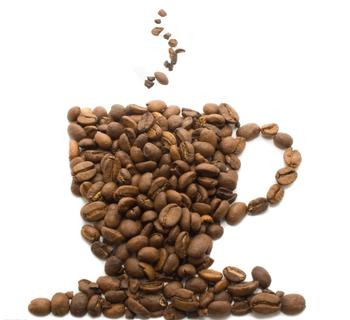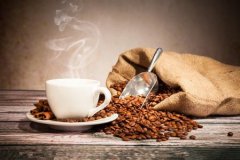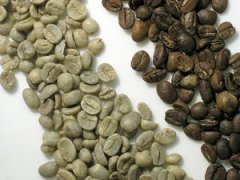Volatile compounds are the main source of coffee flavor.

★ volatile substances:
Volatile compounds are the main source of coffee flavor, which is especially important for coffee quality. There are many kinds of volatile substances in coffee, and their existence will affect the aroma quality of coffee. Its main source is derived from non-volatile substances in raw beans which are disconnected or derived after reaction in the process of roasting. The aroma and flavor of coffee are formed as a result of thermal decomposition, other reactions or compositions, such as sugars, amino acids, organic acids and phenolic compounds. The factors affecting the volatile components of coffee include the variety of coffee beans, cultivation climate, soil conditions, preservation of raw beans, roasting temperature and time, roasting equipment and so on.
Raw coffee beans do not contain the special aroma of coffee, so they are not eaten directly and must be roasted before a large number of volatile aroma compounds are produced. After roasting, there are at least 660 kinds of main volatile aroma components in raw coffee beans, which is the food with the largest variety of volatile aroma components in all foods and beverages. The aromas produced in the process of roasting, such as hazel, cream and caramel, or with grass, smoke, burning, spice and bitterness, are mostly from volatile substances. In addition, the difference of roasting degree will also affect the flavor characteristics of coffee.
★ pectin and lignin:
Pectin is a substance composed of a variety of polysaccharides, which is mainly composed of galactoic acid polymer, rhamnose and so on, with a content of more than 3%. Lignin is the insoluble residue left after the plant is treated with sulfuric acid and caustic alkali, that is, the so-called coffee fiber, with a content of about 2.4%.
★ nitrogen-containing compounds:
The nitrogenous compounds in raw coffee beans can be divided into plant alkaloids, trigonelline (Trigonelline), nicotinic acid, protein and free amino acids.
★ alkaloids:
It is mainly caffeine (Caffeine). The content of caffeine in raw coffee beans varies greatly from variety to variety. The content of Robusta is higher, the average content is about 2.2% of the dry matter, the content of mineArabica is less, the average content is about 1.2%. In recent years, low-caffeinated coffee beans have been cultivated in Java and C ô te d'Ivoire, with a caffeine content of only 0.2%. Caffeine can be removed by a variety of methods to make a variety of decaffeinated products. The caffeine content of decaffeinated instant coffee powder is less than 0.3%, and general commodities are controlled between 0.1% and 0.2%. Caffeine can be said to be the spirit of coffee, but also the most controversial issue.
Although caffeine has no odor, it has a remarkable bitter taste. Although some people want to judge the amount of caffeine by the same degree of bitterness of coffee, it is not completely successful, because the bitterness of caffeine accounts for only a small part of the bitterness of coffee, so there is not much influence on the bitterness of decaffeinated coffee.
After being digested by the human body, caffeine can be quickly absorbed and metabolized and excreted in the urine. The increase of caffeine in human blood depends on the content in the stomach. The most significant physiological effect of caffeine on the human body is the stimulation of the central nervous system. As for the dose required for changes in brain activity, which is much higher than the normal intake, other physiological effects that attract people's attention are the effects on blood pressure, the direction of the heart and blood vessels.
★ trigonelline (Trigonelline):
Trigonelline is a colorless crystal with hygroscopicity and excellent solubility in water. it also has a low degree of physiological effects, mainly for the central nervous system, bile secretion and intestinal peristalsis.
The direct effect of trigonelline on the quality of coffee is very small, its bitter taste is only 1/4 of caffeine, because its existence is very small, so it has little effect on the taste. The content in raw coffee beans varied with different varieties, and the content of Arabica was higher than that of Robusta. Trigonelline decomposes quickly in the process of roasting, and its loss rate is about 50% ~ 80%, which varies according to the roasting temperature and time. In addition, trigonelline breaks down to form a variety of compounds, including non-volatile nicotinic acid. And 29 kinds of volatile compounds, among which 9 kinds of coffee aroma compounds have been identified.
★ nicotinic acid:
The content of nicotinic acid in raw coffee beans is very small, but it increases after roasting, mainly because it comes from the decomposition of trigonelline. But the results show that nicotinic acid continues to decompose into volatile chemicals at high roasting temperatures, so the real increase is not much.
Important Notice :
前街咖啡 FrontStreet Coffee has moved to new addredd:
FrontStreet Coffee Address: 315,Donghua East Road,GuangZhou
Tel:020 38364473
- Prev

Mysterious and Special Oriental Coffee Bean Xizang "Bra" Coffee
There is a kind of coffee called Bula in Xizang mountain area of our country. The mountain area here is not the ice and snow that we imagined, but a place with very little pleasant climate of Xizang. Coffee experts say the appearance and taste of the coffee here is similar to that of Kenyan AA coffee. But it is a pity that the coffee here is basically not for export, mainly for foreign guests. Another coffee producing area in China
- Next

Colombian coffee is one of the individual coffees sold in the world under the name of the country.
Coffee was first introduced to Colombia in 1808 when it was brought by a priest from the French Antilles via Venezuela. Today, the country is the second largest producer after Brazil, with an annual output of 13 million bags of 60 kg each, while Brazil produces 22 million bags a year. The status of coffee in Colombia can be seen in the following examples-all entering the
Related
- Detailed explanation of Jadeite planting Land in Panamanian Jadeite Manor introduction to the grading system of Jadeite competitive bidding, Red bid, Green bid and Rose Summer
- Story of Coffee planting in Brenka region of Costa Rica Stonehenge Manor anaerobic heavy honey treatment of flavor mouth
- What's on the barrel of Blue Mountain Coffee beans?
- Can American coffee also pull flowers? How to use hot American style to pull out a good-looking pattern?
- Can you make a cold extract with coffee beans? What is the right proportion for cold-extracted coffee formula?
- Indonesian PWN Gold Mandrine Coffee Origin Features Flavor How to Chong? Mandolin coffee is American.
- A brief introduction to the flavor characteristics of Brazilian yellow bourbon coffee beans
- What is the effect of different water quality on the flavor of cold-extracted coffee? What kind of water is best for brewing coffee?
- Why do you think of Rose Summer whenever you mention Panamanian coffee?
- Introduction to the characteristics of authentic blue mountain coffee bean producing areas? What is the CIB Coffee Authority in Jamaica?

